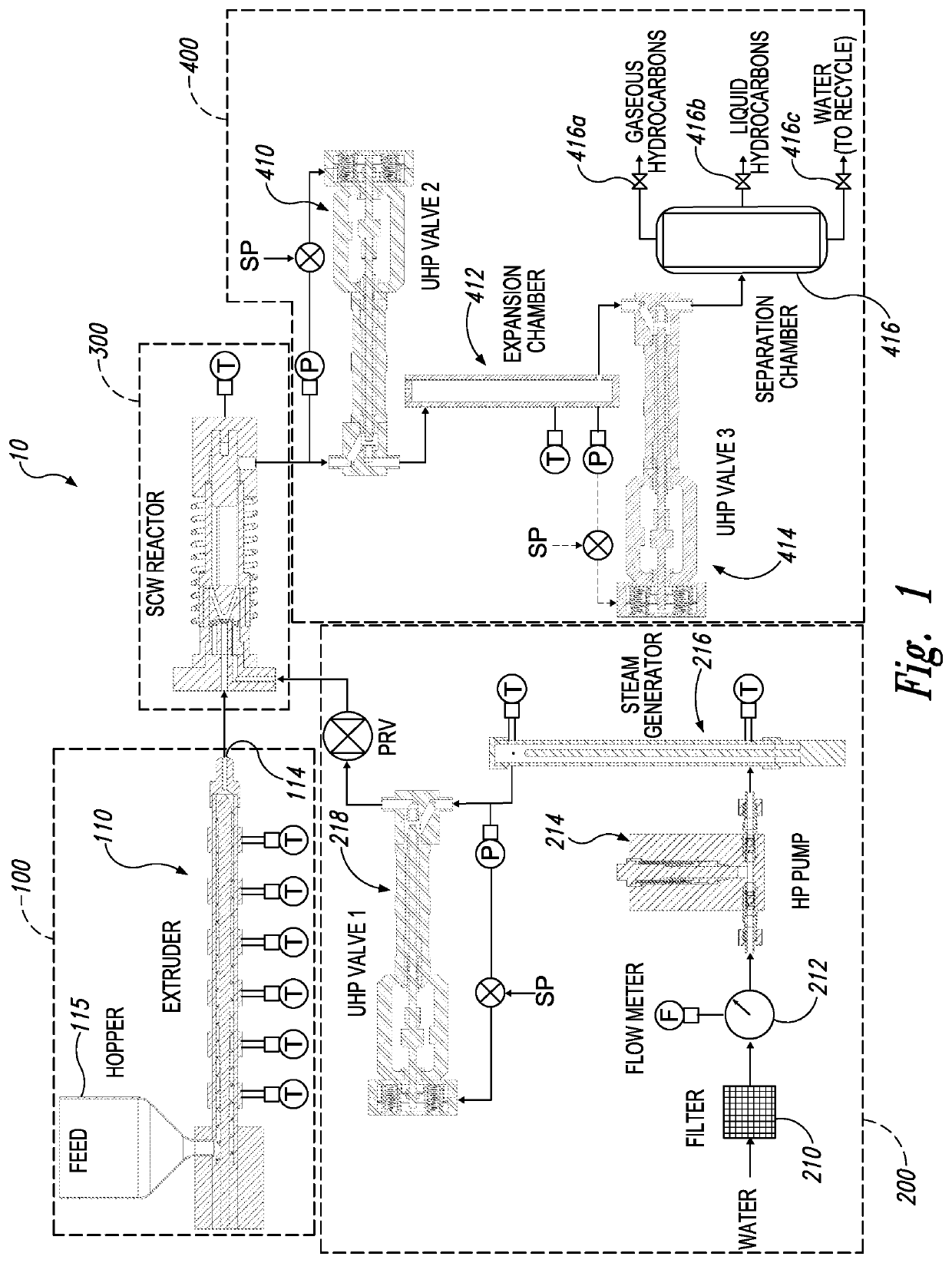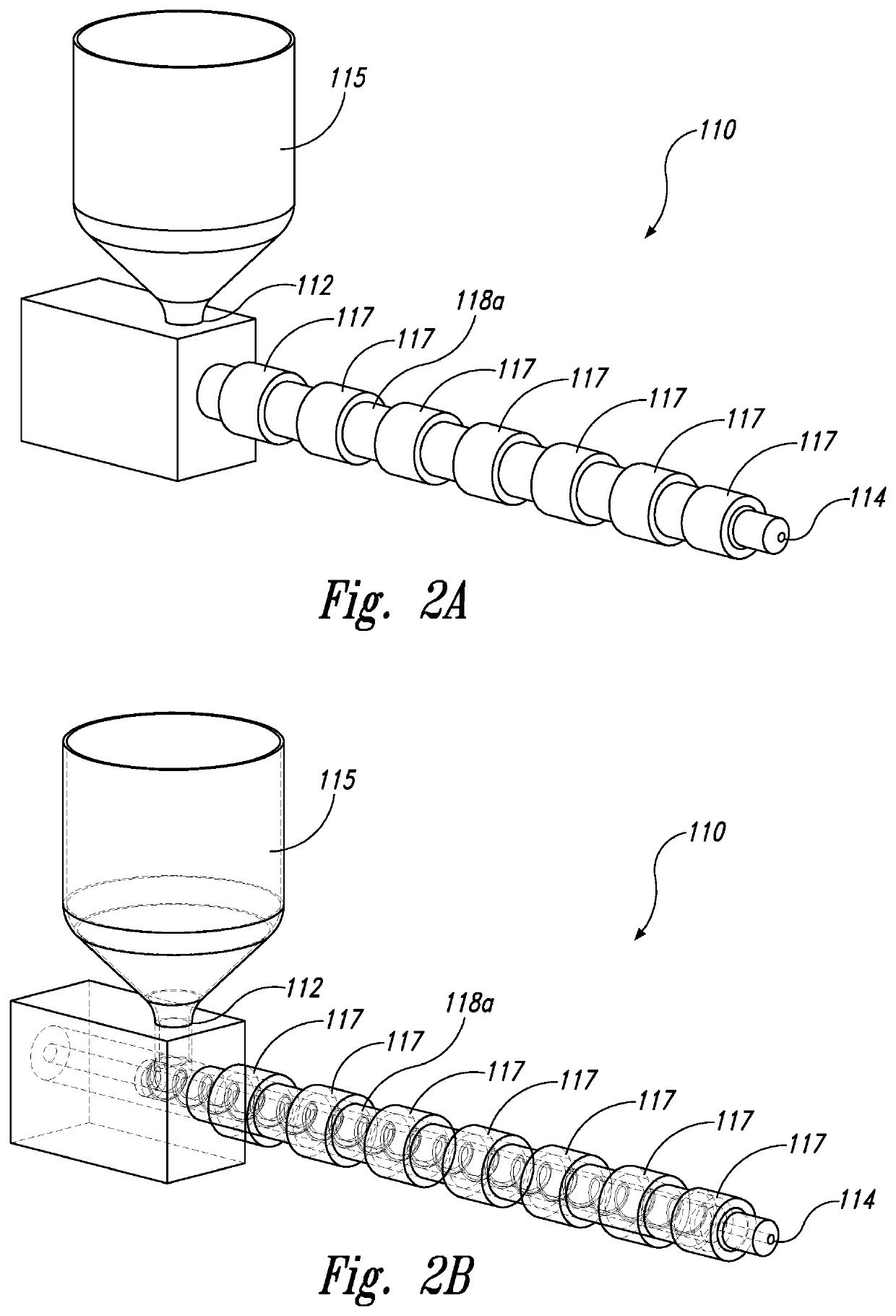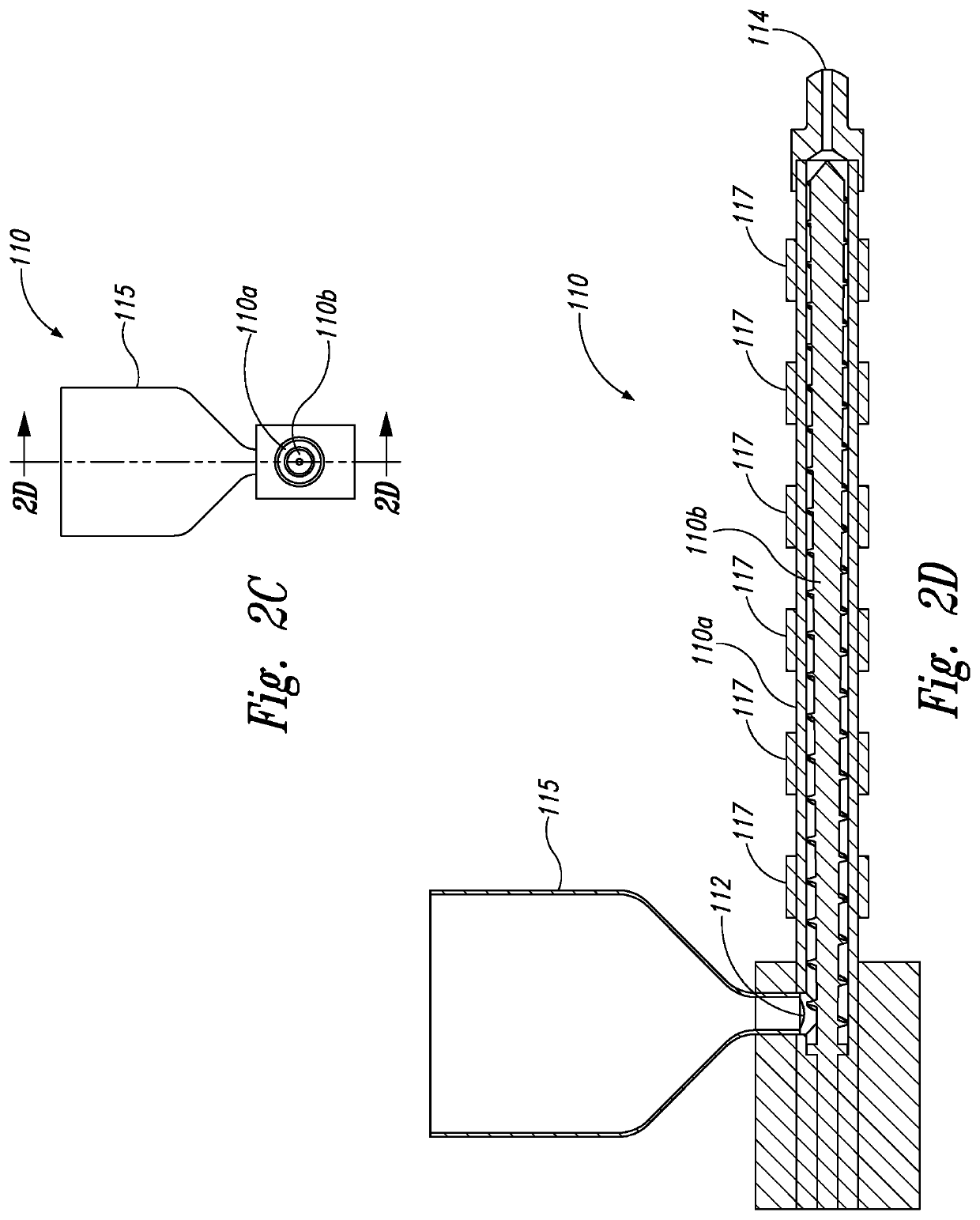Machine and methods for transforming biomass and/or waste plastics via supercritical water reaction
a technology of biomass and/or waste plastics, applied in the direction of supercritical condition processes, chemical/physical/physical-chemical processes, bulk chemical production, etc., can solve the problems of undesirable char product formation, inefficient modern chemical engineering perspective, energy and economic unfavorable transport (conveyance), heating and pressurizing excess water, etc., to achieve easy change, increase or decrease the volume of interior space, the effect of facilitating spreading and thinning
- Summary
- Abstract
- Description
- Claims
- Application Information
AI Technical Summary
Benefits of technology
Problems solved by technology
Method used
Image
Examples
Embodiment Construction
[0026]The present invention in an embodiment is directed to a novel machine for transforming one or more selected polymeric feedstock materials, including solid biomass and / or waste plastic materials, into a plurality of valuable reaction products by way of continuous supercritical water (“SCW”) reaction. Unlike known SCW conversion schemes that use excessive amounts of water (and energy to heat and pressurize the same), the novel machine of the present invention enables the economic utilization of abundant biomass and waste plastics as viable renewable feedstocks (as opposed to fossil fuel derived feedstocks) for conversion into alternative liquid transportation fuels and valuable green-chemical products. The novel machine disclosed herein uses highly regulated (or minimum) amounts of water for feedstock reaction and liquefaction. In addition, the volume (and residence time) of the novel SCW reactor disclosed herein is selectively adjustable (tunable) to enable the processing of a ...
PUM
 Login to View More
Login to View More Abstract
Description
Claims
Application Information
 Login to View More
Login to View More - R&D
- Intellectual Property
- Life Sciences
- Materials
- Tech Scout
- Unparalleled Data Quality
- Higher Quality Content
- 60% Fewer Hallucinations
Browse by: Latest US Patents, China's latest patents, Technical Efficacy Thesaurus, Application Domain, Technology Topic, Popular Technical Reports.
© 2025 PatSnap. All rights reserved.Legal|Privacy policy|Modern Slavery Act Transparency Statement|Sitemap|About US| Contact US: help@patsnap.com



